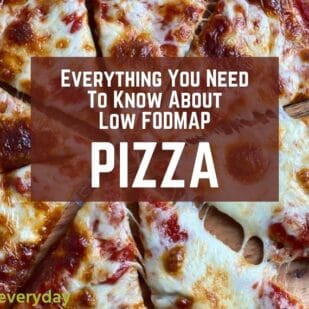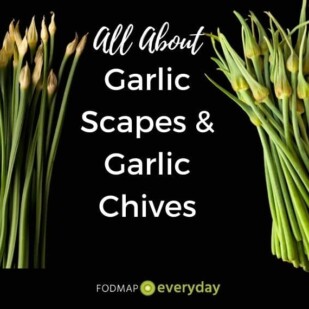Welcome to our Plant-Based Low FODMAP Series! Consider this article as the main hub. Here you will find the basics of what you need to know from a nutritional perspective, and we will provide links to many low FODMAP plant-based recipes, such as Baja Tempeh Taco Salad, Tofu Banh Mi, a New Orleans Style Gumbo and Za’atar Spiced Tofu Scramble – an amazing breakfast, lunch or dinner!
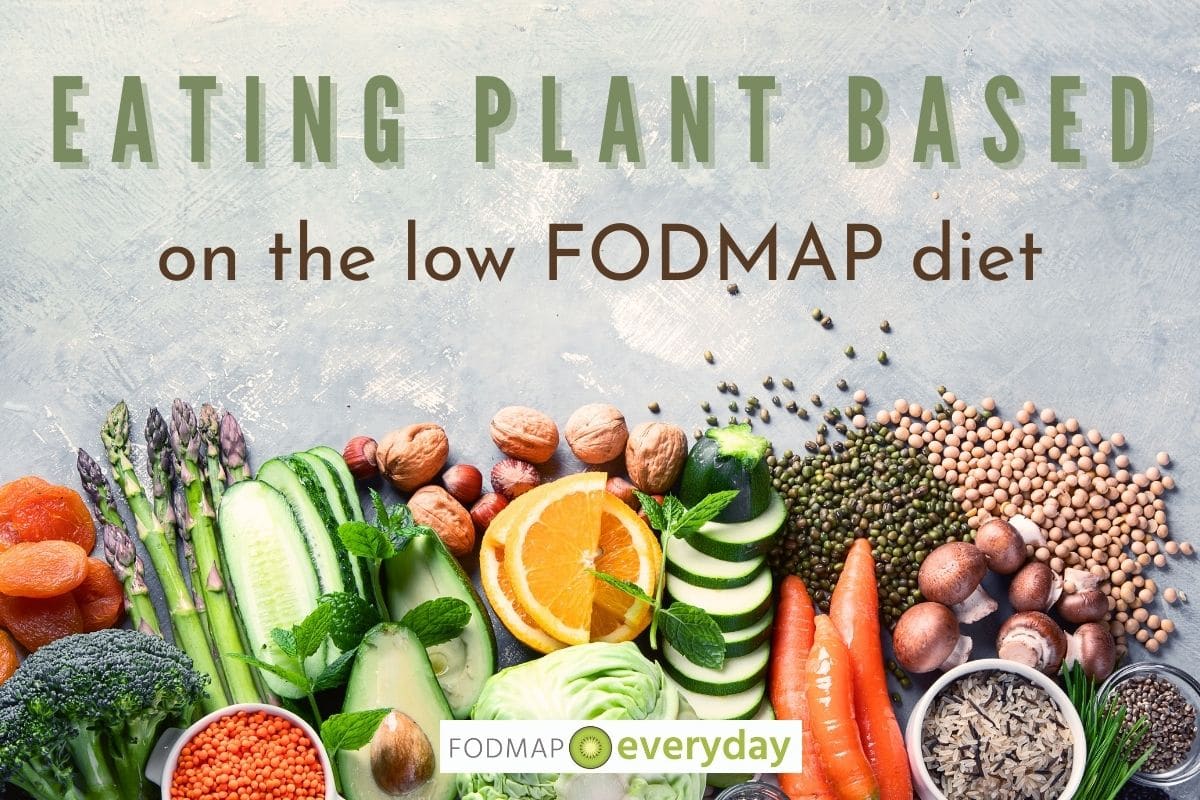
The term “plant-based” seems to be popping up just about everywhere these days, doesn’t it? If you’re curious about what it means to be a “plant-based eater,” and whether you can follow this kind of eating pattern while on the low FODMAP diet, this article is for you.
We’ll answer your most burning questions here, including:
- What exactly is a plant-based diet?
- Can I meet my basic nutrition needs with mostly plants on the low FODMAP diet?
- How can I make a plant-based low FODMAP diet taste delicious?
Let’s start from the top.
What Is A Plant-Based Diet?
Though there is quite a bit of conflicting information out there in the nutrition world, there are some universally accepted recommendations for what constitutes a nutritious, balanced eating pattern. The common denominator among those recommendations: more greens and veggies!
Eating a higher proportion of foods from plant sources compared to animal sources has been shown to provide long-term health benefits for your heart, metabolism, and digestion – and you don’t have to be vegan or vegetarian to reap these rewards.
Instead, the key here is to eat mostly plants, most of the time, over a long period of time. If that sounds like your current eating pattern, you may already be adhering to a plant-based diet.
Here’s what that means in practice.
A plant-based diet is a flexible eating pattern that has two guiding principles:
- Your meals and snacks are comprised of mostly plants and plant-derived ingredients; and
- Animal-based products (like dairy, meat, poultry, and eggs) are treated as the “garnish” or side on your plate, rather than the main event.
In other words, a plant-based diet is NOT:
- A vegan or vegetarian diet;
- A raw diet; or
- A strict diet!
In fact, you can be a plant-based eater and STILL enjoy your mom’s legendary Chicken Parm on occasion. To consider yourself a plant-based eater, all you have to do is consciously ensure that you’re getting more fruits, vegetables, leafy greens, whole grains, beans, seeds, fresh herbs (like cilantro, parsley, basil and the like), and legumes than animal products in your overall eating pattern. And voila! Consider yourself plant-based.
Can I Eat Plant-Based On The Low FODMAP Diet?
Now, there is some nuance when it comes to plant-based eating on the low FODMAP diet, and it’s possible that you will need to put in some additional planning and intention to ensure that you’re meeting your nutrition needs.
Here’s why.
As you may already know, FODMAPs are specific types of carbohydrates that can cause uncomfortable digestive symptoms for individuals diagnosed with irritable bowel syndrome (IBS). The reason for this is that FODMAPs (or Fermentable Oligosaccharides, Disaccharides, Monosaccharides, and Polyols) are either not well-digested in the small intestine or take a bit longer to absorb than other carbs.
So, after eating a FODMAP-rich meal, there will likely be a high concentration of FODMAP particles in your small bowel. The presence of these particles causes water to be drawn into the intestine due to simple osmosis. As FODMAPs continue their transit from the small bowel into the large bowel, they encounter bacteria that then break them down as a fuel source, through a process called fermentation.
One of the end products of bacterial fermentation – or “post-biotics” – is gas. Though gas can sometimes feel uncomfortable, these FODMAP-derived post-biotic gases can confer health benefits to your gut lining and beyond – but that is a topic for another day!
Altogether, the digestive process required for FODMAPs to be broken down and absorbed can result in some water retention and gas production. These effects may contribute to digestive discomfort and abdominal distension for anyone, regardless of whether you have been diagnosed with IBS or not.
Monitoring FODMAPs & Plants
So, what does all this have to do with your plant-based diet?
Well, FODMAPs can be in present in many plants!
Many of the nutritious, gut-loving staple foods we see in a plant-based diet – like garlic, onions, wheat, avocados, cauliflower, and many others – are high in FODMAPs. So, if you’re planning to stick to a plant-based eating pattern while on the low FODMAP diet, the key will be to moderate your intake of FODMAP-containing foods, while still consuming a maximally diverse and nutrient-rich plant-based diet.
Although the Elimination Phase of the low FODMAP diet is only short-term (2-6 weeks according to Monash University, the originators of the low FODMAP diet), it is important to ensure you are intentional about achieving foundational nutritional adequacy with your plant-based low FODMAP approach.
5 Important Nutrients on a Plant-Based Low FODMAP Diet
Time to flex your planning skills. Here are the top 5 nutrients to get on your plate at every plant-based low FODMAP meal.
P.S. You may also notice some overlap among the food lists I’m about to share, which is GREAT news for you – the items you see in multiple nutrient categories may well become your plant-based low FODMAP staples. Keep a running list of your favorites so you know what to grab at the grocery store each week.
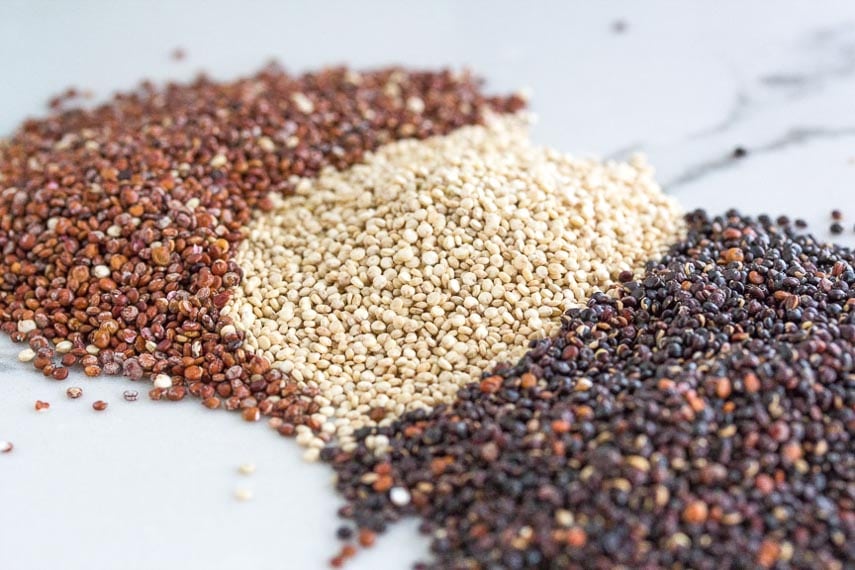
1. Protein
Protein is a macronutrient and is required by every cell in the human body. It is integral for growth, healing, and maintenance of tissues, among a very long list of other life-sustaining functions. Many plant-based protein sources (e.g. legumes, pulses, nuts, and some soy products) are low FODMAP, in specific serving sizes. Note that if you are using canned beans, be sure to drain them before weighing and eating.
To ensure that you’re getting about 15-30% of your daily energy intake from protein, aim to include a low FODMAP protein source at all your meals and snacks, including:
- Quinoa (≤1 cup/155 g cooked; white, red, or black)
- Edamame (≤½ cup/90 g cooked)
- Firm or Extra Firm Tofu (≤2/3 cup/160 g, cubed; fortified with calcium)
- Tempeh (≤1 slice 4 cm x 11 cm x 2.5 cm thick/100 g; fortified with calcium)
- Soy milk made from soy protein isolate, not whole soybeans (≤1 cup/257 g; made without inulin)
- Pea protein isolate (≤1 serve Monash-approved protein powder)
- Peanuts (≤32 per serving/28 g)
- Macadamia nuts (≤20 per serving/40 g)
- Almonds (≤10 per serving/24 g)
- Brazil nuts (≤10 per serving/40 g)
- Pecans (≤10 per serving/20 g)
- Walnuts (≤10 per serving/30 g)
- Pumpkin seeds (≤2 tbsp/23 g)
- Sunflower seeds (≤2 tbsp/6 g)
- Poppy seeds (≤2 tbsp/24 g)
- Hemp seeds (≤2 tbsp/20 g)
- Chia seeds (≤2 tbsp/24 g)
- Red lentils (≤2 tbsp/23 g, cooked from dry)
- Green lentils (≤¼ cup/46 g, canned)
- Black beans (≤⅙ cup/40 g, canned)
- Chickpeas (≤¼ cup/42 g, canned)
- Butter beans (≤¼ cup/35 g, canned)
- Lima beans (≤¼ cup/39 g, boiled)
- Mung beans (≤¼ cup/53 g, boiled)
- Adzuki beans (≤⅕ cup/35 g, boiled)
- Refried Pinto beans (≤⅙ cup/45 g)
- Pinto beans (≤2 tablespoons/45 g, canned)
- Almond butter (≤1 tbsp/20 g)
- Peanut butter (≤2 tbsp/50 g)
Remember to be aware of stacking. You want to minimize or avoid over-loading any one kind of FODMAP within each meal.
The beauty of a plant-based diet is that you can still incorporate foods from animal sources (like eggs, meat, fish, poultry, and lactose-free or low-lactose dairy) as “sides” or “garnishes” on your plate. Remember, eating plant-based is more about being plant-focused and does not necessarily mean vegan or vegetarian.
Animal sourced proteins are excellent sources of bioavailable protein and are naturally FODMAP free, so if you do include some in your habitual plant-based diet, you may continue to do so during your low FODMAP Elimination Phase, Challenge Phase, and beyond.

2. Calcium
Calcium is required in your body to keep your bones and teeth strong, to send and receive nerve signals from the brain, to maintain a normal heartbeat, and to stimulate the muscle contractions that cause movement. In other words, it is an extremely important micronutrient!
The following are low FODMAP sources of this MVP nutrient to incorporate in your meals and snacks:
- Firm or Extra Firm Tofu (≤2/3 cup/160 g, cubed; fortified with calcium)
- Tempeh (≤1 slice 4 cm x 11 cm x 2.5 cm thick/100 g; fortified with calcium)
- Soy milk made from soy protein isolate, not whole soybeans (≤1 cup/257 g; made without inulin)
- Tahini (≤2 tbsp/30 g, hulled)
- Amaranth (≤¼ cup/10 g, puffed grain)
- Teff (≤2/3 cup/100 g flour)
- Wakame flakes (≤1 tsp/5 g)
- Kelp noodles (≤1 cup, 113 g)
- Bok choy (≤1 cup, 75 g)
- Broccoli (≤¾ cup/75 g)
- Collard greens (≤1 cup/ 75 g, chopped)
- Okra (≤7 pods/75 g)
- Kale (≤½ cup/75 g, chopped)
- Almonds (≤10 per serving/24 g)
- Brazil nuts (≤10 per serving/40 g)
- Oranges (≤1 medium/130 g navel orange)
- Raspberries (≤30 berries/60 g)
- Beverages fortified with calcium, like orange juice
You may also consider including lactose-free or low lactose dairy (milk, cream cheese, yoghurt, kefir) for additional calcium through non-plant-based sources. Remember the low FODMAP diet is not a dairy-free diet.
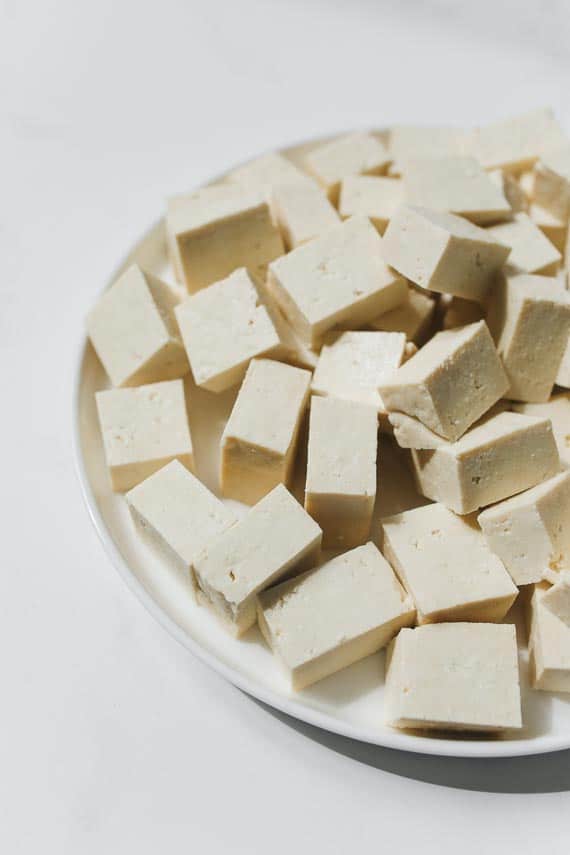
3. Iron
Iron is a mineral that is used to oxygenate your blood, support immune function, bolster cognitive function, and convert dietary carbohydrates into usable energy within the cell. Iron deficiency is unfortunately more common in plant-based eaters because, though there are many plant-based sources of iron, they tend to be less bioavailable compared against animal-based sources of iron.
This means, it is more difficult for your body to extract and use iron from plants. To boost your body’s ability to extract iron from plant sources, include a vitamin C source at all of your meals. This can be as simple as a squeeze of lemon or another low FODMAP serving of citrus fruit for dessert.
Here are some low FODMAP serves of iron-rich plant foods.
- Firm or Extra Firm Tofu (≤2/3 cup/160 g, cubed; fortified with calcium)
- Tempeh (≤1 slice 4 cm x 11 cm x 2.5 cm thick/100 g; fortified with calcium)
- Red lentils (≤2 tablespoons/23 g cooked from dry)
- Green lentils (≤¼ cup/46 g, canned)
- Black beans (≤¼ cup/45 g, canned)
- Chickpeas (≤¼ cup/42 g, canned)
- Pumpkin seeds (≤2 tbsp/23 g)
- Sunflower seeds (≤2 tbsp/6 g)
- Poppy seeds (≤2 tbsp/24 g)
- Hemp seeds (≤2 tbsp/20 g)
- Chia seeds (≤2 tbsp/24 g)
- Quinoa (≤1 cup/155 g cooked; white, red, or black)
- Collard greens (≤1 cup/ 75 g, chopped)
- Potatoes (≤½ cup/75 g, unpeeled)
- Rolled oats (≤½ cup/52 g)
- Spelt sourdough bread (≤2 slices/52 g)
- Hearts of palm (≤½ cup/145 g, canned)
- Swiss chard (≤1 cup/75 g, chopped)
- Sorghum flour (≤2/3 cup/100 g)
- English spinach (≤2 cups/75 g)
- Baby spinach (≤1.5 cups/75 g)
- Teff (≤2/3 cup/100 g, flour)
- Tomato paste (≤2 tbsp/28 g)
Again, if you tend to include animal-derived products in your baseline plant-based diet, you will be gaining from iron from those sources as well during your low FODMAP experience. You can also use a cast-iron pan to cook your food. Studies have shown varying results, but some iron does leech into your food, and we love cooking with cast-iron anyway, so why not?
4. Vitamin B12
Vitamin B12 is a water-soluble vitamin and is required for healthy blood cells, nerve cells, and DNA synthesis. Vitamin B12 is naturally found in animal-derived foods as a byproduct of bacterial metabolism. As a result, plant foods do not naturally contain B12 and can instead be fortified with highly bioavailable sources of the vitamin. To ensure that you are getting the Recommended Daily Intake of B12, be sure to include the following sources in your plant-based low FODMAP diet.
- Fortified nutritional yeast (≤ 1 tbsp)
- Fortified cereals (i.e. Special K ≤1 ¼ cup/39g; Corn Flakes ≤1 ½ cup/42g; Frosted Flakes ≤1 cup/37 g; and others)
- Fortified plant milks (i.e. soy milk made from soy protein isolate, ≤1 cup/240 ml)
- Fortified Firm or Extra Firm Tofu (≤2/3 cup/160 g cubed)
It is entirely possible to meet your B12 needs with the above-mentioned plant-foods. If your plant-based diet includes animal products, small serves of beef, fish, shellfish, or dairy can help to ensure that you meet your daily needs.

5. Zinc
Zinc is a crucial mineral that the body does not synthesize on its own. It is involved in immune function, protein and DNA synthesis, and growth. Whenever possible, it’s best to meet your daily zinc needs through diet, rather than supplementation, as zinc competes with other minerals (like copper) for uptake. Here are some plant-based low FODMAP pantry staples that will help you reach that goal!
- Fortified cereals (i.e. Special K ≤1 ¼ cup/39g; Corn Flakes ≤1 ½ cup/42g; Frosted Flakes ≤1 cup/37 g; and others)
- Firm or Extra Firm Tofu (≤2/3 cup/160 g, cubed; fortified with calcium)
- Tempeh (≤1 slice 4 cm x 11 cm x 2.5 cm thick/100 g; fortified with calcium)
- Red lentils (≤2 tablespoons/23 g cooked from dry)
- Green lentils (≤¼ cup/46 g, canned)
- Chickpeas (≤¼ cup/42 g, canned)
- Black beans (≤⅙ cup/40 g, canned)
- Chickpeas (≤¼ cup/42 g, canned)
- Pumpkin seeds (≤2 tbsp/23 g)
- Sunflower seeds (≤2 tbsp/6 g)
- Poppy seeds (≤2 tbsp/24 g)
- Hemp seeds (≤2 tbsp/20 g)
- Chia seeds (≤2 tbsp/24 g)
- Pine nuts (≤1 tbsp/14 g)
- Red rice (≤1 cup/190 g, cooked)
Stay On Top Of Your Plant-Based Choices
As we’ve gone through each of these important nutrients, you might be starting to notice the trend – plant-based diets can be exceptionally nutrient dense, balanced, and complete on their own. Including only small amounts of animal-sourced foods can provide additional options for to assure nutritional adequacy on the low FODMAP diet, though it is entirely possible to meet your needs through plant foods, with some intention and planning.
As always, doublecheck the low FODMAP quantity of each of these food items in your Monash Food app and FODMAP Friendly app and remember that what is low FODMAP in these apps may not be low FODMAP for you. See our article, What Is A Low FODMAP Serving Size?
Adapt quantities to your individual thresholds and keep it interesting!
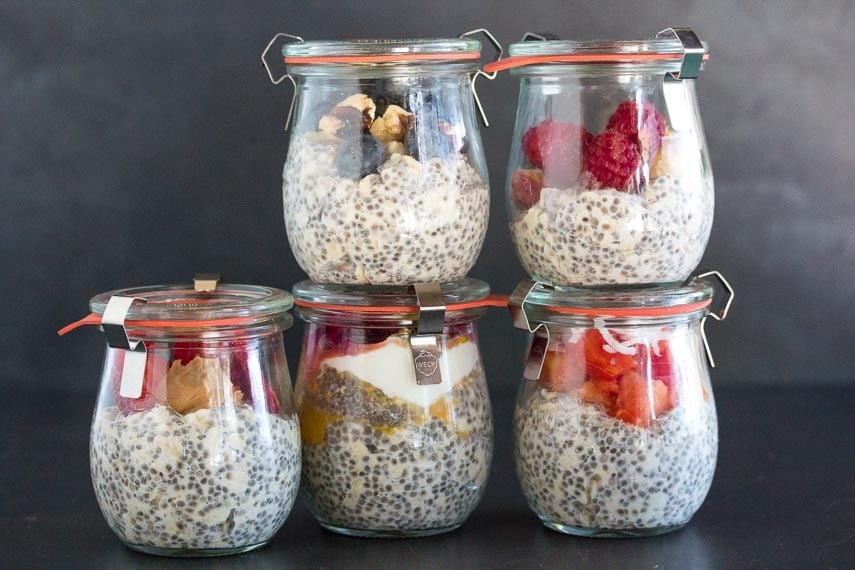
Making Plant-Based Low FODMAP Delicious
Let’s get real. Making changes to our nutrition habits can be hard, no matter how big or small. Especially if you’re grappling with uncomfortable digestive symptoms at the same time. The bright side is that we can take steps to ensure that your plant-based low FODMAP foods actually taste delicious.
These are my top tips.
1. Incorporate Your Cultural Foods
Staying true to your cultural foods throughout the course of any dietary modification is essential to your success and joy in the process.
As FODMAP testing continues to grow and expand, there are more and more known low FODMAP options from cuisines around the world. Did you know that the Monash app can be searched by country? You can look up foods specific for over two-dozen countries from Australia to the U.S., Spain to Sri Lanka, Norway to Italy and more.
There are also well-described strategies to trial non-tested foods if you find you’re your favorite cultural dishes from home include ingredients that are not in a FODMAP database just yet. Check out our article What If A Food Has Not Been Lab Tested For FODMAPs?
Working with a culturally sensitive FODMAP dietitian will be exceptionally helpful in walking you through this process and help you with low FODMAP recipe modifications.
Check out one of our newest recipes for a plant-based low FODMAP tofu banh mi.
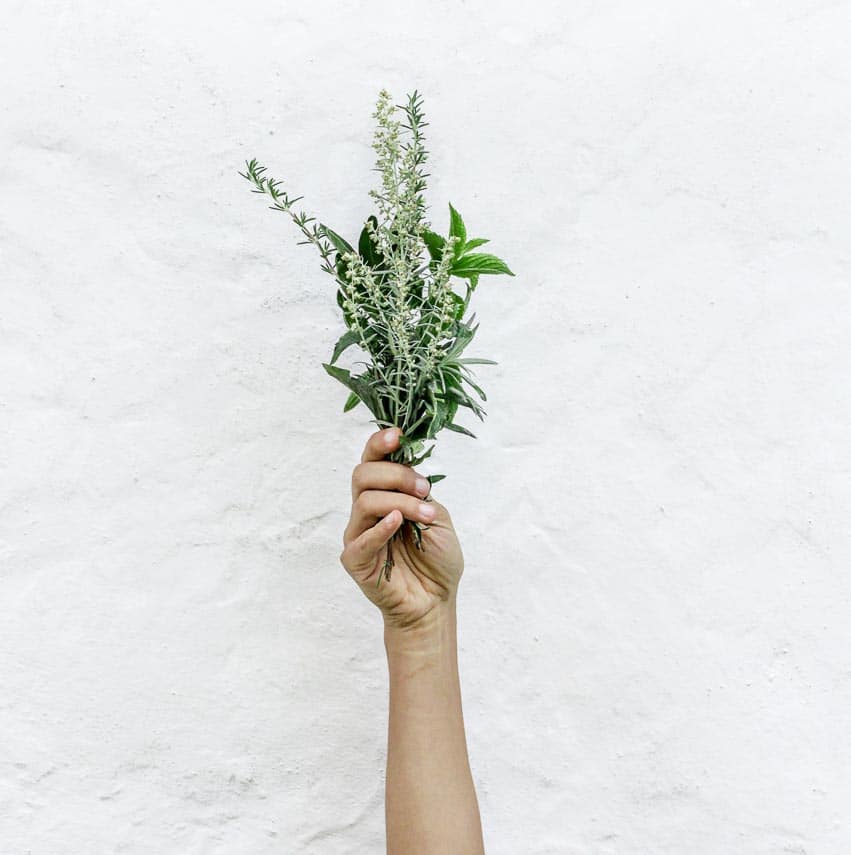
2. Experiment With Fresh & Dried Herbs And Spices
Low FODMAP does not have to be bland! There are many – and I mean MANY – known low FODMAP herbs and spices to choose from. In fact, many of these contain polyphenols and other beneficial phytonutrients – or plant-derived chemicals – that are like a 5-star buffet for your beneficial gut bacteria. Some herbs and spices the team at Monash University has tested include:
- Adobo (≤1 tsp)
- Allspice (≤1 tsp)
- Amchur (≤1 tsp)
- Asafetida (≤¼ tsp)
- Basil, fresh (≤1 cup/16 g)
- BBQ Sauce (≤2 tbsp, preferably without garlic, onion or high fructose corn syrup)
- Cardamom seeds (≤1 tsp)
- Chipotle chili (≤1 tsp, ground)
- Chimichurri sauce (≤2 tsp)
- Chives (≤1 tbsp)
- Cilantro, fresh (≤1 cup/16 g)
- Cinnamon (≤1 tsp)
- Cumin (≤1 tsp)
- Dill, fresh (≤1 cup/16 g)
- Five spice (≤ 1 tsp)
- Makrut lime leaves (≤3 leaves)
- Lemongrass (≤1 x 10cm stalk)
- Mint, fresh (≤1 “bundle”/90 g)
- Nutmeg (≤2 nutmegs)
- Oregano (≤1 tsp)
- Paprika (≤1 tsp)
- Parsley, fresh (≤1 cup/16 g)
- Black pepper (≤1 tsp)
- Rosemary, fresh (≤1 cup/16 g)
- Saffron (≤1 “packet”/ 1 g)
As always, adjust recipes with these herbs and spices based on where you are in your low FODMAP diet and your individual tolerance.
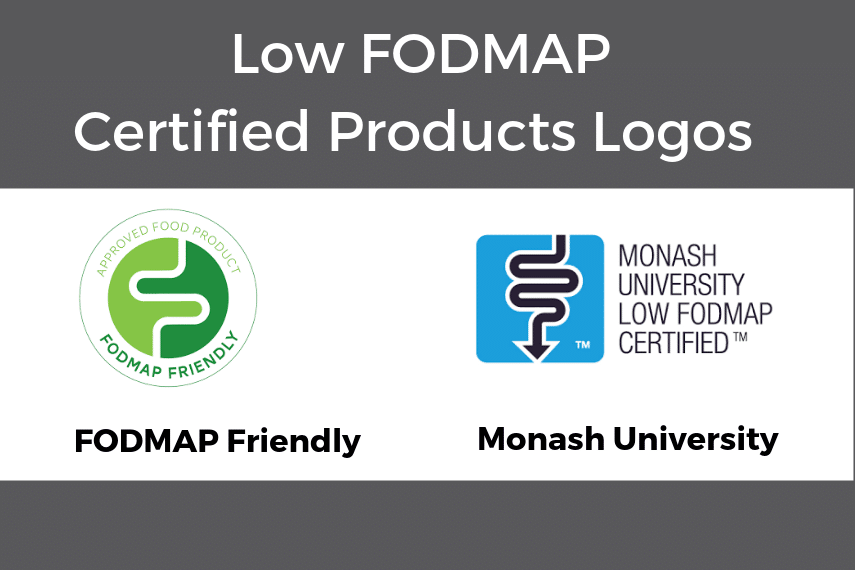
Don’t Forget Certified Low FODMAP Products
And of course there are many lab tested and certified low FODMAP herb and spice blends that we think belong in your pantry. Look for one of the two icons shown above on the labels:
- Smoke ‘n Sanity Lemon Pepper
- Smoke ‘n Sanity SPG
- Smoke ‘n Sanity Sweet Maple Dust
- Smoke ‘n Sanity Garlic Parmesan
- Smoke ‘n Sanity SNS SteakHouse
- Smoke ‘n Sanity Triple S All Purpose Seasoning
- Smoke ‘n Sanity Taco Seasoning
- Smoke ‘n Sanity Super Club Ranch
- Smoke ‘n Sanity Cajun Creole
- Smoke ‘n Sanity Teriyaki
- Casa de Santé Organic Creole Cajun Seasoning
- Casa de Santé Indian Spicy Hot Seasoning
- Casa de Santé Lemon Herb Seasoning
- Casa de Santé Organic BBQ Coffee Rub
- Casa de Santé Organic Taco Seasoning
- Casa de Santé Organic Tuscan Herb Mix
- Casa de Santé Thai Curry Powder
- Casa de Santé Organic Chili Seasoning
- Casa de Santé Organic Adobo All Purpose Seasoning
- Fody Taco Seasoning
- Fody Lemon Herb Seasoning
- Fody Steak Seasoning
- Pincha Salt Bush Dukkah
- Pincha Salt Hajia Salt
- Pincha Salt Middle East Rub
- Pincha Salt Seafood Rub
- Pincha Salt Zesty Pep
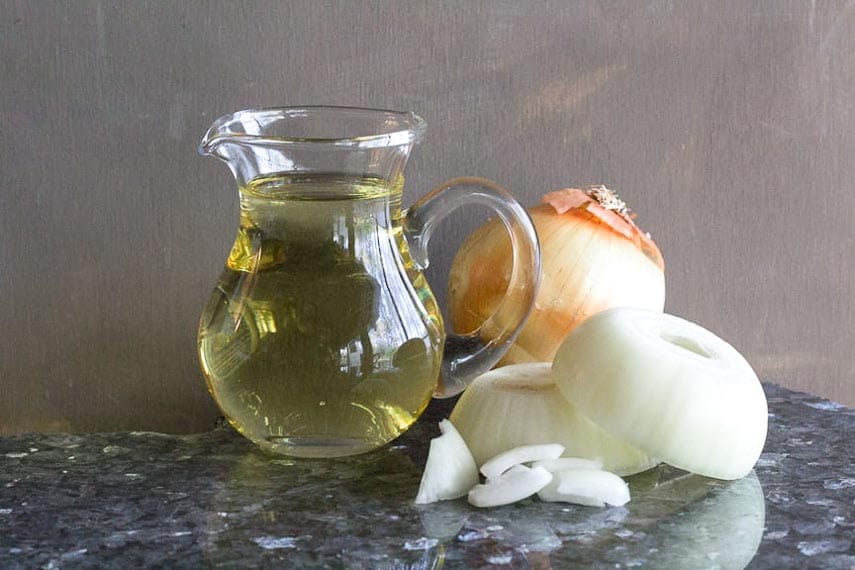
3. Get Your Garlic & Onion Flavor
If you love that sharp, pungent, aromatic, allium flavor from garlic and onion, your jaw might have hit the floor (like mine did) when you discovered that these were considered high FODMAP. I have three pieces of good news.
First, strict elimination of alliums might well be temporary for you! You could eventually be able to reincorporate and increase your tolerance for these foods.
If you discover that you struggle with raw alliums, you might find that you’re able to tolerate cooked alliums better! Depending on your specific goals, these are the types of details you will discover as you move through your Challenge Phase.
Second, you can still cook with alliums if you follow a specific technique. The fructans in garlic and onions are water soluble, but not oil soluble. You can add oil – any pure oil, even avocado or coconut oil – to a pot, add your chopped garlic and/or onions, sauté the solids, then remove all of the solids before you add anything else. The garlic and onion flavor will be in the oil, but no fructans will have leached out. Then go ahead and add your tofu or vegetables and make your dish.
Try our homemade Low FODMAP Garlic-Infused Oil and Low FODMAP Onion-Infused Oil. We always keep them around in both an olive oil base, as well as a neutral vegetable oil base. We prefer the latter for our Mexican, Tex-Mex and Asian cooking.
Here are some low FODMAP garlic and onion products to try:
- Asafetida (≤¼ tsp)
- FreeFod Garlic Replacer
- FreeFod Onion Replacer
- Gourmend Garlic Scape Powder
- Gourmend Garlic Chive Powder
- Smoke ‘n Sanity Essence of Garlic Salt
- Smoke ‘n Sanity Essence of Onion Salt
- Fody Garlic-Infused Olive Oil
- Fody Shallot-Infused Olive Oil
- Tourangelle Garlic-Infused Oil – our favorite neutral-oil based choice
And thirdly, remember that there are fresh options, too:
- Chives (FODMAP free, according to Monash)
- Asian garlic chives (≤1 cup/80 g)
- Scallions, green parts only (FODMAP free, according to Monash)
- Leeks, green parts only (≤2/3 cup/54 g)
- Leeks, bulb (14 g)
4. Familiarize Yourself With Low FODMAP Sauces, Marinades & Condiments
Gravies, jellies, salad dressings, chutneys, salsas – sometimes a condiment is just what your recipe needs to take it to the next level. We have an article for you called The Ultimate Guide To Low FODMAP Condiments that you should definitely read. Did you know that you can have Worcestershire sauce as well as conventional mayonnaise, mustards and ketchup?
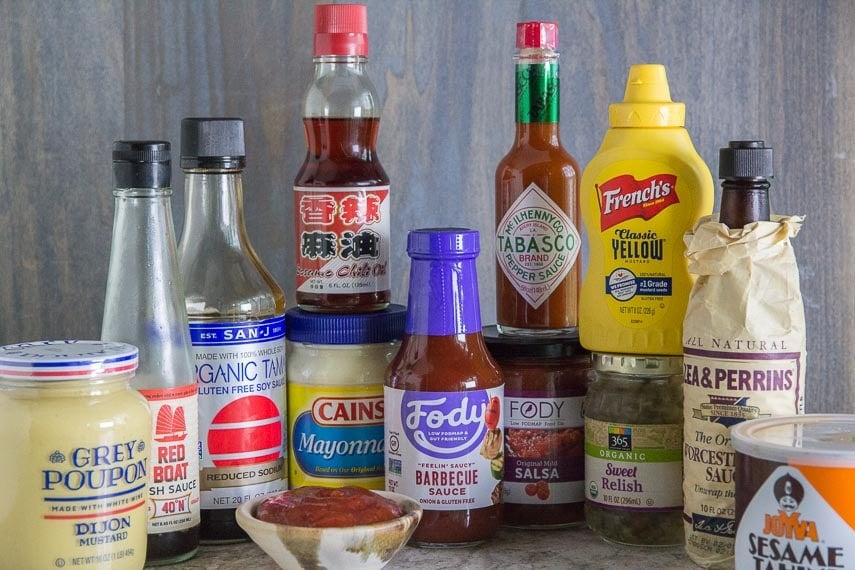
Also check out our original low FODMAP recipes for Sauces, Salsas, and Condiments here! Pick a few that stand out to you, try them out, and consider batch prepping your favorites in a volume that will last you through the week. Go simple, with a Red Wine Vinaigrette, or go adventurous with Pineapple Whiskey BBQ Sauce.
5. Stock Up On Staples
Don’t shy away from the frozen section and the canned food aisles. Many nutrient-packed, plant-based low FODMAP staples are just a zap in the microwave away from your plate. You can find items like pre-cooked quinoa, brown rice, white rice, edamame, potatoes, spinach, collards, berries, and more in the freezer, which can be economical and easy to cook when it’s mealtime.
Psst. This is another reason why we love drained canned beans, firm or extra-firm tofu, as well as tempeh dishes. Since there is very minimal cooking (if any) involved in prepping a dish with one of these ingredients, you can shave some serious time off your meal next prep by using these in place of animal products.
Some Favorite Plant-Based Recipes
We have so many plant-based recipes it is hard to play favorites, but here are some to get you started:
- Baja Tempeh Taco Salad
- Plant-Based New Orleans Gumbo
- Tofu Banh Mi
- Za’atar Spiced Tofu Scramble
- Tofu Salad
- Chickpea Salad
- Thai Tofu Curry
- Roasted Root Vegetable Tian
- Two-Mushroom Miso Soup
- Roasted Root Vegetable Soup
- Tempeh Lentil Chili
- Cinnamon Apple Breakfast Cookies
- Roasted Pumpkin Quinoa Salad
- Loaded Low FODMAP Kale Chips
- Vegan Chocolate Chunk Cookies

- Cold Soba Salad with Greens
- Vegan Pot Pie
- Polenta With Sautéed Mushrooms & Kale
- Zoodles, Noodles & Sprouts Salad
- Cilantro Lime Rice
- Eggplant Tomato Zucchini Pasta Sauce
- Vegetable,Pasta & Bean Soup
- And so many more

The Takeaway
- A plant-based low FODMAP diet emphasizes plant-derived food sources over animal sources, but can still include small amounts of meat, poultry, fish, eggs, or dairy as a “side” or “garnish.”
- With proper planning and intention, a plant-based low FODMAP diet can absolutely be nutritionally adequate – and delicious! Include low FODMAP quantities of as many different plant varieties as you can, using the nutrient guide provided above, The Monash and FODMAP Friendly apps, and the help of a FODMAP-trained Registered Dietitian.
- Make your plant-based low FODMAP diet as diverse and flavor-packed as possible by staying true to your cultural foods, and keeping fresh herbs, spices, seasonings, sauces, and convenient staples accessible at home.
